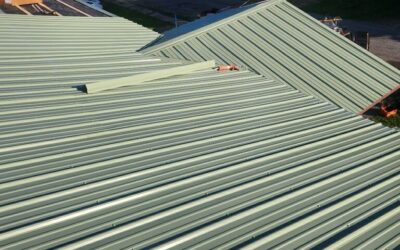The Ultimate Guide to Choosing Your Roofing Shoes
When you’re a roofer, your footwear isn’t just a fashion statement—it’s an essential part of your safety and comfort on the job. Roofing is a physically demanding profession that involves climbing, balancing, bending, and often working in harsh weather conditions. With that in mind, choosing the right roofing shoes can make all the difference between a successful, injury-free workday and a potentially dangerous one.
In this ultimate guide, we’ll walk you through the critical factors to consider when choosing roofing shoes. We’ll cover the different types of shoes and boots available, the key features to look for, how to care for your footwear, and even some recommendations from trusted brands. Whether you’re a seasoned roofer or just starting, this guide will help you make an informed decision for your feet—and your safety.
Why Are Roofing Shoes Important?
1. Safety First
Safety is the number one priority for any roofer. Roofing involves working at heights, on uneven surfaces, and often in challenging weather conditions. A slip, trip, or fall can result in serious injuries, and that’s where the right footwear comes in.
A good pair of roofing shoes will provide slip resistance, firm grip, and ankle support. They will also help to protect your feet from sharp objects, hot surfaces, and falling debris. When you work on a roof, your shoes are your first line of defense against injuries.
2. Comfort and Support
Roofing is hard work, often requiring long hours on your feet. Comfort and support are crucial for preventing foot fatigue and ensuring that you can work effectively throughout the day. The right roofing shoes will provide ample cushioning, arch support, and stability to keep your feet comfortable even after hours of work.
3. Durability
Roofing shoes undergo a lot of wear and tear. Whether you’re walking on shingles, metal, or rough terrain, your shoes need to withstand the punishment. Durable materials and construction ensure your shoes last longer, saving you money on replacements in the long run.
4. Weather Protection
Roofers often work in extreme weather conditions, from blazing sun to freezing rain or snow. The right footwear will help protect your feet from the elements. Waterproof shoes are essential in wet conditions, while insulated shoes or boots are necessary for cold weather.
Types of Roofing Shoes and Boots
Choosing the right type of footwear is critical, and understanding the options available can help you make an informed decision. Here’s a breakdown of the different types of shoes and boots used in roofing:
1. Roofing Boots
Roofing boots are the most popular choice for roofers because they offer extra ankle support, comfort, and durability. They typically have a higher shaft that goes up to the calf or knee, providing support and stability when you’re working on steep slopes. Roofing boots often come with steel toes for added protection.
Key Features:
- Waterproofing: Many roofing boots are designed to keep your feet dry by using waterproof materials.
- Slip Resistance: Roofing boots come with specialized outsoles that help you maintain grip on slippery surfaces.
- Steel Toes: Steel-toed roofing boots provide protection from falling tools or materials.
2. Work Shoes
While roofing boots are popular, work shoes are another viable option for roofers. Work shoes generally offer less ankle support than boots but are lighter and more flexible. They can be a good choice for roofers who don’t need the extra coverage that boots provide but still want the support and durability needed for the job.
Key Features:
- Lightweight Design: Work shoes are usually more lightweight and breathable than boots, offering more flexibility and comfort.
- Slip Resistance: Like roofing boots, work shoes are designed with slip-resistant soles to help prevent falls.
- Comfort: Many work shoes come with cushioning and arch support to ensure comfort during long hours.
3. Safety Shoes
Safety shoes are specifically designed to protect your feet from hazards such as heavy objects, sharp tools, and falling debris. While they are often made with steel toes and slip-resistant soles, safety shoes are not always as durable as roofing boots.
Key Features:
- Steel Toes: Protects your toes from injury in the event of falling objects.
- Electrical Hazard Protection: Some safety shoes are rated to protect against electrical hazards, an important feature if you’re working on roofs near electrical lines.
- Oil and Slip Resistant: Ensures a firm grip on surfaces that may be wet or slick.
4. Slip-Resistant Shoes
For roofers who work on smooth surfaces like metal or tile, slip-resistant shoes are a must-have. These shoes are designed with specialized outsoles that help you stay steady, even on surfaces that would otherwise be treacherous. While they don’t always have the same level of durability as work boots, they’re a solid choice for short-term roofing jobs.
Key Features:
- Specialized Outsoles: These outsoles provide enhanced traction to prevent slips and falls.
- Low Profile: Typically, slip-resistant shoes have a low-profile design, making them ideal for working on roofs where balance is key.
5. Waterproof Shoes
Waterproof roofing shoes are essential for working in wet conditions, such as during rainy days or on morning dew-covered roofs. They keep your feet dry, reducing the risk of blisters and fungal infections. Many roofing boots are also waterproof, but you can find specialized waterproof shoes for lighter, more flexible options.
Key Features:
- Waterproofing Materials: Materials like Gore-Tex are used to keep water out while still allowing your feet to breathe.
- Quick-Dry Technology: Some waterproof shoes come with quick-dry technology to prevent moisture buildup.
What to Look for When Choosing Roofing Shoes
Now that you know the different types of roofing shoes available, it’s time to dive into the specific features you should consider when making your decision. Keep in mind that every roofer has unique needs, so the best shoes for you will depend on the type of roofing you do, your working environment, and your personal preferences.
1. Slip Resistance
Slip resistance is the most important feature in roofing shoes. Slippery roofs, especially in wet conditions, are a major safety concern, so you’ll want shoes that can keep you steady. Look for shoes with rubber outsoles that have a tread pattern designed to grip surfaces, even when wet.
2. Comfort and Cushioning
Roofing is a physically demanding job, and your feet will take a beating. Look for shoes with cushioned insoles to absorb shock and provide comfort during long hours on your feet. Some roofing shoes have memory foam insoles that mold to your feet for a custom fit.
3. Durability
Roofing can be tough on footwear, so you’ll want shoes made from high-quality, durable materials. Leather is a popular option because it’s tough, water-resistant, and long-lasting. If you’re working with metal roofs, consider shoes with reinforced toes and a steel shank for added protection.
4. Support
Good support is crucial for maintaining your balance while working at heights. Look for shoes with arch support and ankle support to reduce foot fatigue. Boots that come with additional ankle protection can help prevent sprains and injuries.
5. Weather Protection
Depending on where you live, you may need shoes that can handle extreme weather. Waterproof boots are essential for wet conditions, while insulated boots will keep your feet warm in cold climates. If you live in a warmer region, choose shoes that offer ventilation to keep your feet cool and dry.
6. Safety Features
If you’re working in an environment with heavy tools or materials, you may want shoes with safety features like steel toes or a puncture-resistant sole. These features will protect your feet from falling objects, sharp debris, or even electrical hazards.
Caring for Your Roofing Shoes
To get the most out of your roofing shoes, you need to take care of them properly. Here are some tips for maintaining your shoes and ensuring their longevity:
1. Clean After Every Job
Roofing shoes get dirty quickly, especially if you’re working with asphalt shingles, gravel, or other debris. After each job, wipe your shoes down with a damp cloth to remove dirt and grime. You can also use a soft brush to scrub the soles to maintain their grip.
2. Protect the Leather
If you’re wearing leather roofing boots, use a leather conditioner to keep the material supple and prevent cracks. You can also waterproof your leather boots by applying a waterproofing spray.
3. Store Properly
When you’re not working, store your roofing shoes in a cool, dry place to prevent them from getting damaged. Avoid leaving them in direct sunlight, as this can cause the material to degrade over time.
4. Replace When Necessary
If your roofing shoes start to show signs of wear and tear, such as holes in the soles or worn-out insoles, it’s time for a replacement. It’s better to replace them early rather than risk an injury on the job.
Top Roofing Shoe Recommendations
Here are some popular and trusted roofing shoe brands and models that you should consider:
1. Timberland PRO Men’s 6″ Pit Boss Soft Toe Work Boot
Timberland PRO boots are known for their comfort, durability, and safety features. The Pit Boss boot is a great option for roofers due to its slip-resistant sole, steel shank for added support, and padded collar for comfort.
2. Caterpillar Men’s Second Shift Steel Toe Work Boot
Caterpillar boots are a popular choice for roofers. The Second Shift boots offer slip resistance, steel toes for added protection, and a durable leather upper. They are built to withstand the rigors of roofing work.
3. KEEN Utility Men’s Pittsburgh Steel Toe Work Boot
KEEN’s Pittsburgh boots are known for their comfort and protective features. With a steel toe and slip-resistant sole, these boots will keep your feet safe while providing ample cushioning for long hours on the roof.
4. Wolverine Men’s Raider 6″ Work Boot
Wolverine is a trusted name in work boots, and the Raider model is perfect for roofers. With a slip-resistant sole, cushioned insole, and a sturdy leather upper, these boots provide everything you need for a long day on the roof.
Conclusion
Choosing the right roofing shoes is critical for your safety, comfort, and productivity on the job. Whether you prefer boots for extra ankle support or lightweight shoes for flexibility, the right footwear will help you perform at your best while minimizing the risk of injury. Always prioritize slip resistance, comfort, durability, and safety features when selecting your roofing shoes, and remember to care for them properly to extend their lifespan. With the right pair of roofing shoes, you’ll be ready to tackle any job with confidence.
Remember to choose shoes that fit well and meet your specific needs, and don’t hesitate to invest in high-quality footwear that will support you for years to come. Stay safe, stay comfortable, and let your shoes help you get the job done right!
 (440) 307-2060
(440) 307-2060



